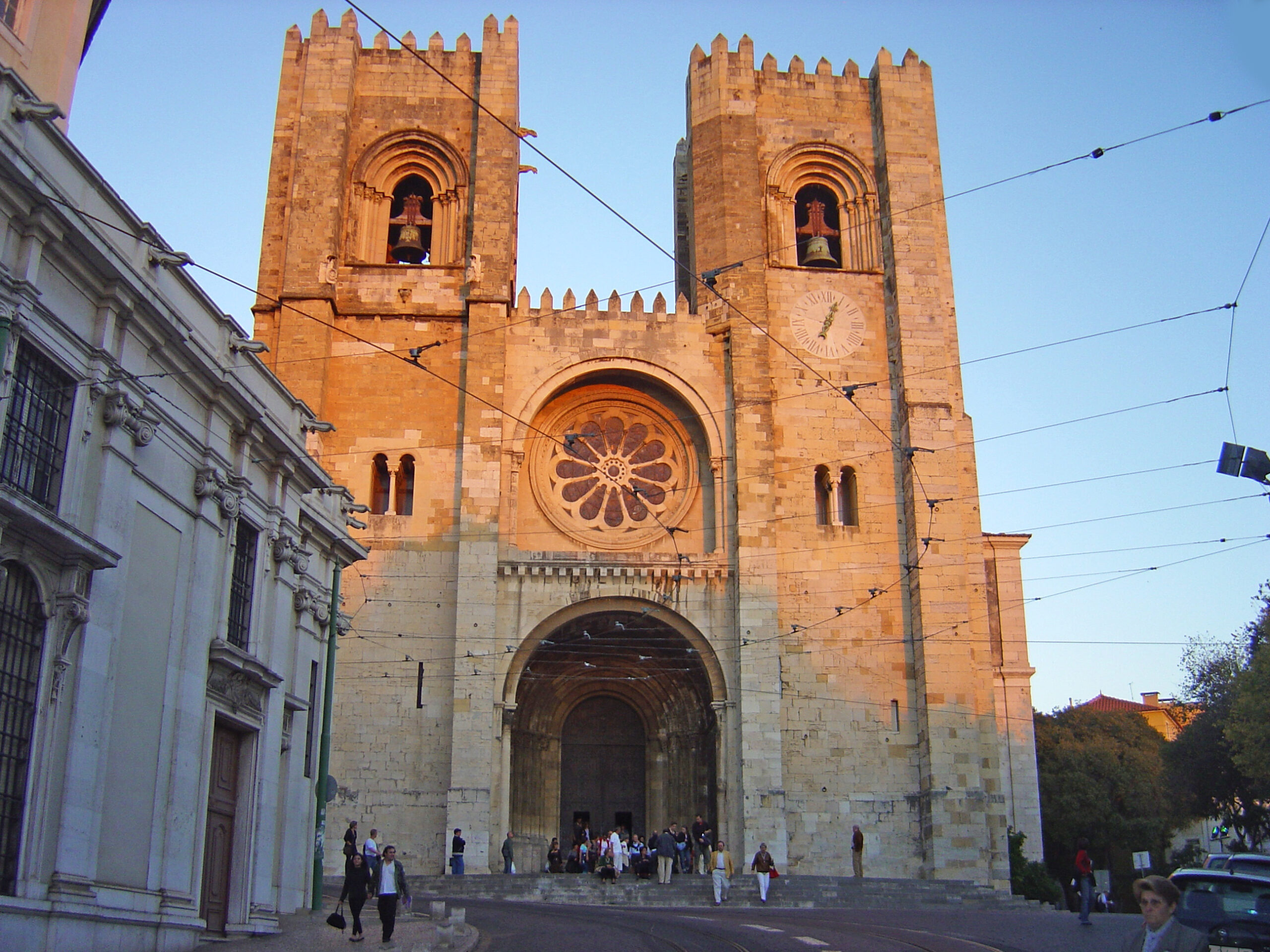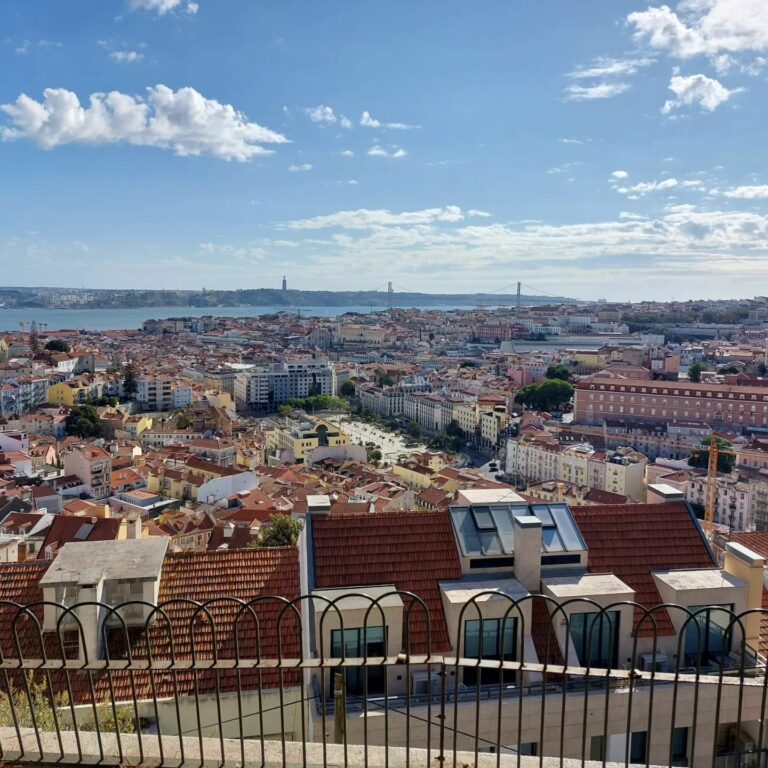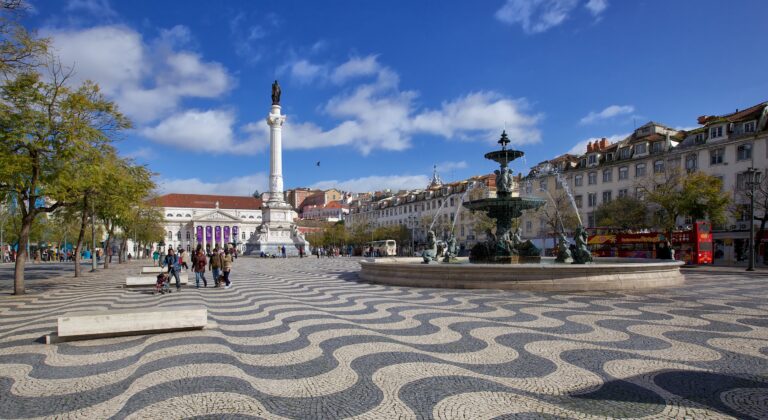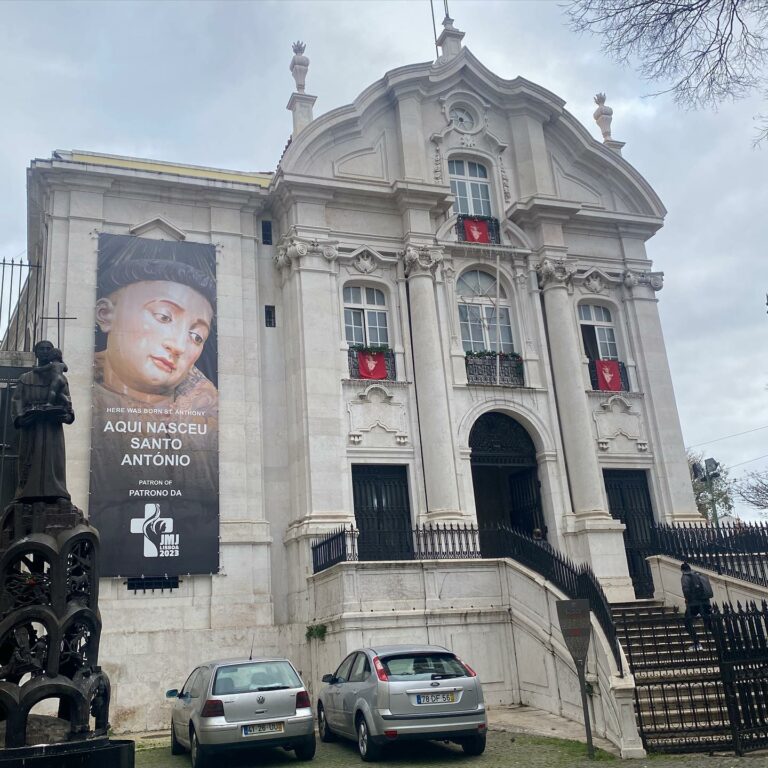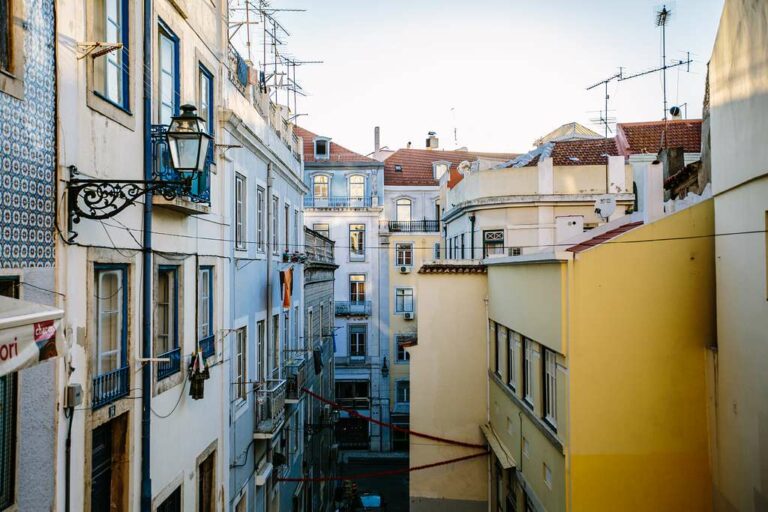Visit the Lisbon Cathedral, also known as Sé de Lisboa, in the Alfama district for a timeless journey through history and faith.
The iconic landmark is a sacred symbol in Lisbon and has witnessed centuries of change while embodying the city’s rich cultural and religious heritage.
Before visiting, you must know some essential things, and I’m sharing them all with you.
Lisbon Cathedral History
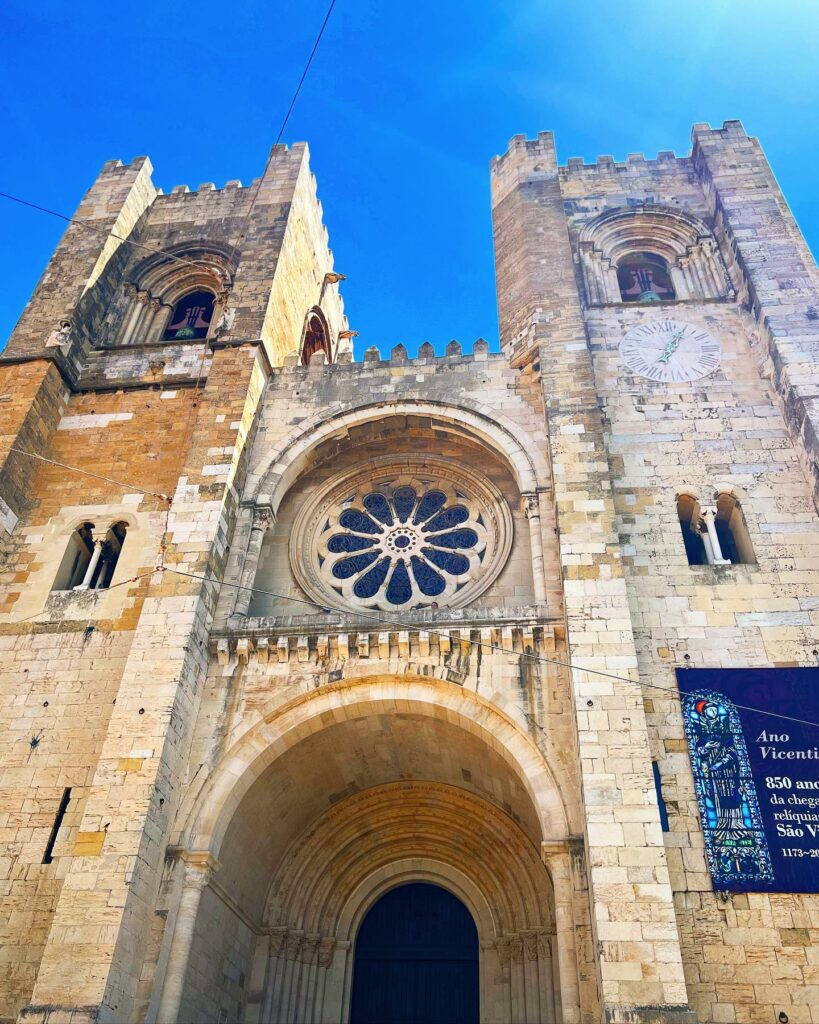
The history of Lisbon Cathedral Sé de Lisboa dates back centuries. It is one of Lisbon’s most iconic religious buildings, dating back to the 12th century.
Se Cathedral has witnessed baptisms, marriages, and the passing of nobles to elites. The church’s exterior is grand and resembles more of a fortification than a religious place.
The walls are solid, and there are two imposing clock towers. The church is inside gothic arches that extend to faulted ceilings with medieval statues and decorative alters.
Here, you find ancient Gothic cloisters constructed on top of a ruined mosque symbolic of the 13th-century Catholic churches.
One interesting fact is that the name Sé is derived from the initials of Sedes Episcopalis, which means bishop’s seat.
Another interesting fact is that Lisbon Cathedral was the first religious building constructed by the Christian Crusaders in the 12th century.
The Lisbon church still contains the font used to baptize Saint Anthony, the patron saint of Portugal, in 1195.
Saint Anthony was born about 200m from where the Igreja de Santo António Church stands today.
A standout feature of the Lisbon Cathedral is the Romanesque-styled rose window. The rose window underwent a reconstruction during the 20th century.
The people used fragments of the original window destroyed in the powerful earthquake in 1755. At the time, the roof collapsed on worshipers celebrating the Feast of All Saints.
Visiting Sé de Lisboa
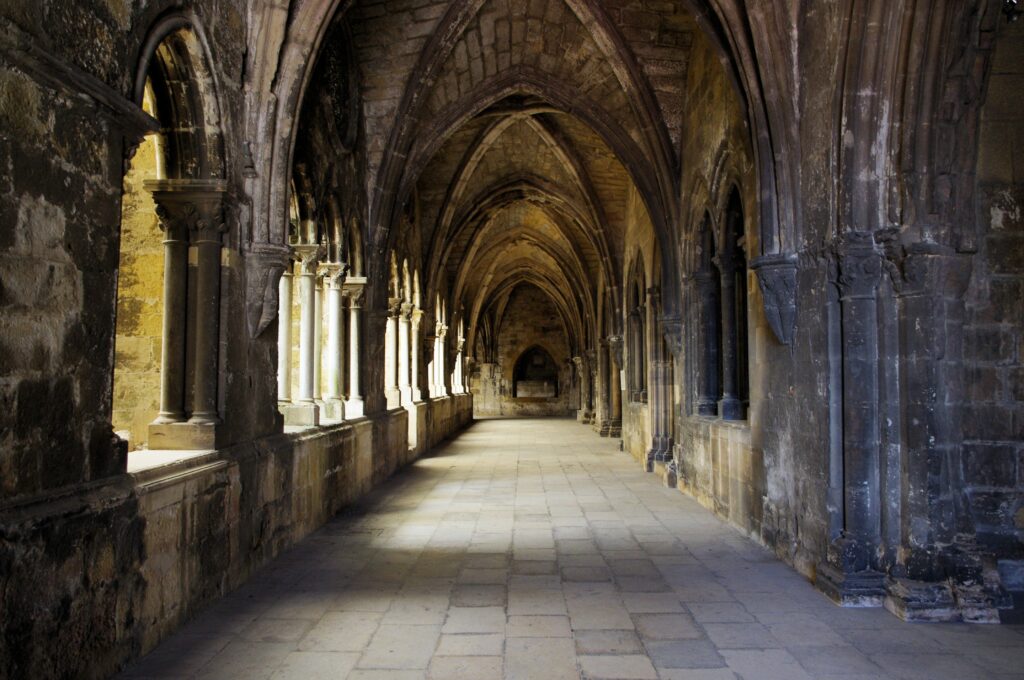
Before visiting this Romanesque building, you should know a few things.
Lisbon Cathedral Times
The religious sections of the cathedral you find open every day from 7 AM until the evening mass at 7 PM. The cloisters open daily at 10 AM and close at 5 PM for visitors.
Sé de Lisboa Entrance Fees
The main cathedral has no admission fees, but you must dress appropriately. A typical visit lasts between 15 and 20 minutes, with 20 minutes added to visit the cloisters.
To visit the cloisters, you can expect to pay the following for the Lisbon Cathedral entry ticket:
- Adults €5
- Children aged 7 to 12 €3
- Kids under six get free access
The tickets include a visit to the abbey and Treasury. You can book your tickets online at the official Lisbon Cathedral site.
Noteworthy Tip: The Lisbon Cathedral is not included in the Lisbon Card. Check out my guide on using the Lisbon Card and what is included.
Visiting The Lisbon Cathedral
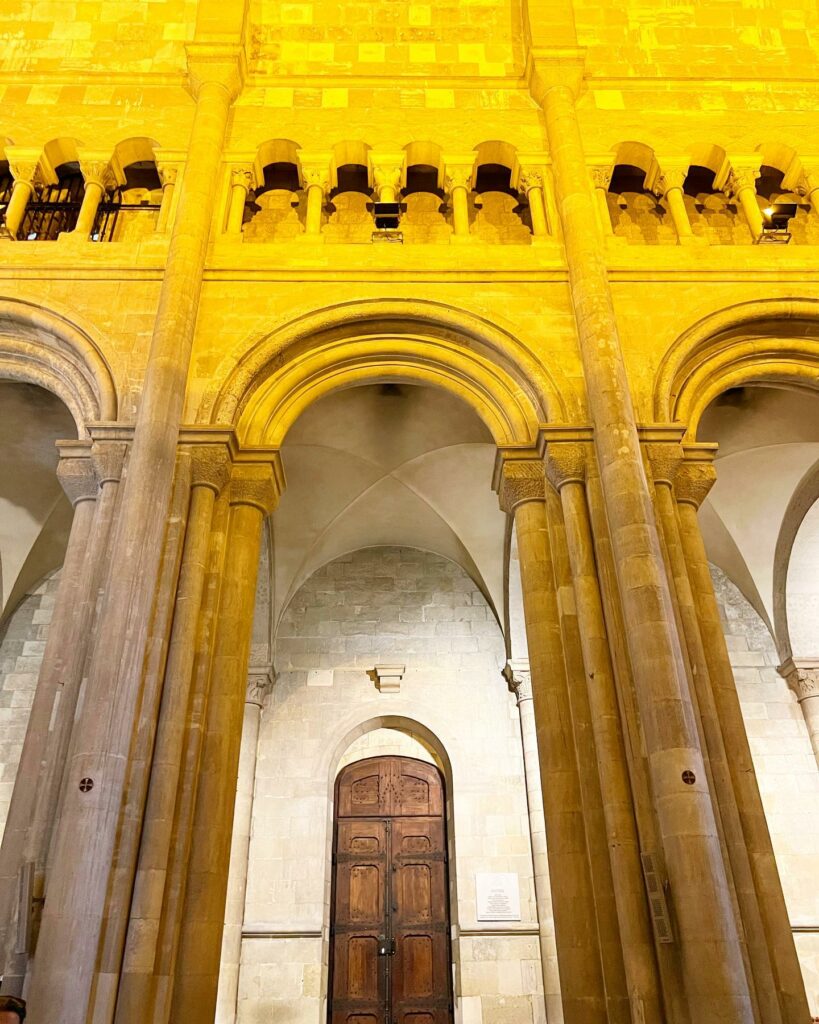
When visiting the cathedral, there are two main tourist sections: the transept, the religious nave, and the sanctuary with the cloisters in the rear.
The 14th-century cloister you find partially excavated to show the foundation of the mosque on which the church was constructed.
The best part is that every part of the cathedral has a story to tell, from the exterior to the interior.
Before you enter the cathedral, take your time to admire the Romanesque style from the outside.
You will see two solid towers reaching the sky, with a huge rose window triumph style in the middle on the upper side of an arch. Then, head indoors for something spectacular.
Planning On Going To Lisbon?
I’ve created a trip planner where you enter the number of days you’re going and what activities you want to do.
Based on your input, you then get an entire vacation planned with ideas.

The High Choir
At the high choir point, you get the best views of the Lisbon Cathedral from the central nave until the channel.
View the stained glass windows that reproduce the 12 Apostles around Christ based on a reconstruction destroyed after the devastating earthquake.
The Transept Space
The transept space still has the original Romanesque vaults, with archways added during the 20th-century reconstruction.
Two stained-glass windows portray the Lisbon patrons Saint Anthony and Saint Vincent.
In the center of the altar, you see a dome rising in a lantern tower formed by the octagonal dome. On the side is an image of Saint Mary Major.
See a Spectacular Gold Art Object
While visiting, look at the gold art object made with 17kg of gold displayed with four thousand precious stones. The 18th-century monstrance of D. Jo’o V is believed to have been a gift from the King to the cathedral.
Other remarkable works inside are the following:
- Sarcophagus of Bartolomeo Koanes, founder of a city hostel
- Nativity scene made by Machado de Castro, dating back to the XVIII century
- Artist Machado de Castro made the tomb of King D. Alfonso IV and Queen Dona Brites
The Treasury of The Cathedral of Lisbon
The Treasury houses true works of art, including clothing, goldsmithing, sculptures, paintings, and more, dating back between the 16th and 19th centuries. There are four rooms to explore.
Things to See Close to Lisbon Cathedral
Once you’re done exploring the cathedral, you can head to these great attractions:
- The Church of Saint Anthony and the museum is across from the cathedral.
- Next to the church is the Alijube Museum, which used to be a former prison.
- Another attraction is the National Pantheon, which I recommend visiting. It will take your breath away.
- Close to the National Pantheon is the Feira da Larda market, open on Tuesdays and Saturdays to find some interesting items to take home.
- While exploring the Cathedral in Alfama, visit the Graca district for street art and more, and see the Miradouro da Senhora do Monte viewpoint.
Hot Tip🔥: To explore Alfama, including the Lisbon Cathedral, I have a helpful free walking tour guide available for the district.
Where to Stay Near the Cathedral

The Memmo Alfama Hotel is close to the cathedral. It is hidden behind the cathedral in an alley. From here, you can enjoy the most beautiful views of Lisbon. You can also stay at any of these Alfama hotels.
Hot Tip🔥: Also visit one of these fabulous restaurants in Alfama to enjoy traditional to international food.
Here are the best things to do in Lisbon In September 2024
I’ll send you a list of the best things to do in September and every month moving forward from today.
It’ll be based on my personal experience of living and traveling around Lisbon for years. I’m sharing a lot of hidden gems. 🇵🇹
How to Travel to Lisbon Cathedral

Getting to Lisbon Cathedral is convenient due to its central location in Alfama, one of Lisbon’s oldest neighborhoods. Here are some tips to help you plan your journey:
By Public Transport:
- Tram: The iconic Tram 28 is a popular scenic route that stops near Lisbon Cathedral. Catching this tram offers a charming ride through the city’s narrow streets.
- Metro: Terreiro do Paço on the Blue Line is the nearest metro station. From there, it’s a short walk uphill to the cathedral.
- Bus: Several bus lines, including 737 and 759, have stops close to the cathedral, providing easy access from different parts of the city.
By Foot:
Walking to the cathedral can be a delightful experience if you’re staying in central Lisbon. The Alfama district’s winding streets and historic charm make for a picturesque stroll.
By Car:
Driving to Lisbon Cathedral is an option, but be prepared for limited parking in the historic center. Some parking garages nearby, such as Chão do Loureiro, allow you to leave your car and explore on foot.
By Tuk-Tuk:
For a fun and unique travel experience, consider taking a tuk-tuk. These small, motorized vehicles are popular in Lisbon and can navigate the narrow streets of Alfama, offering a quick and scenic ride to the cathedral.
Tips For Visiting Lisbon Cathedral
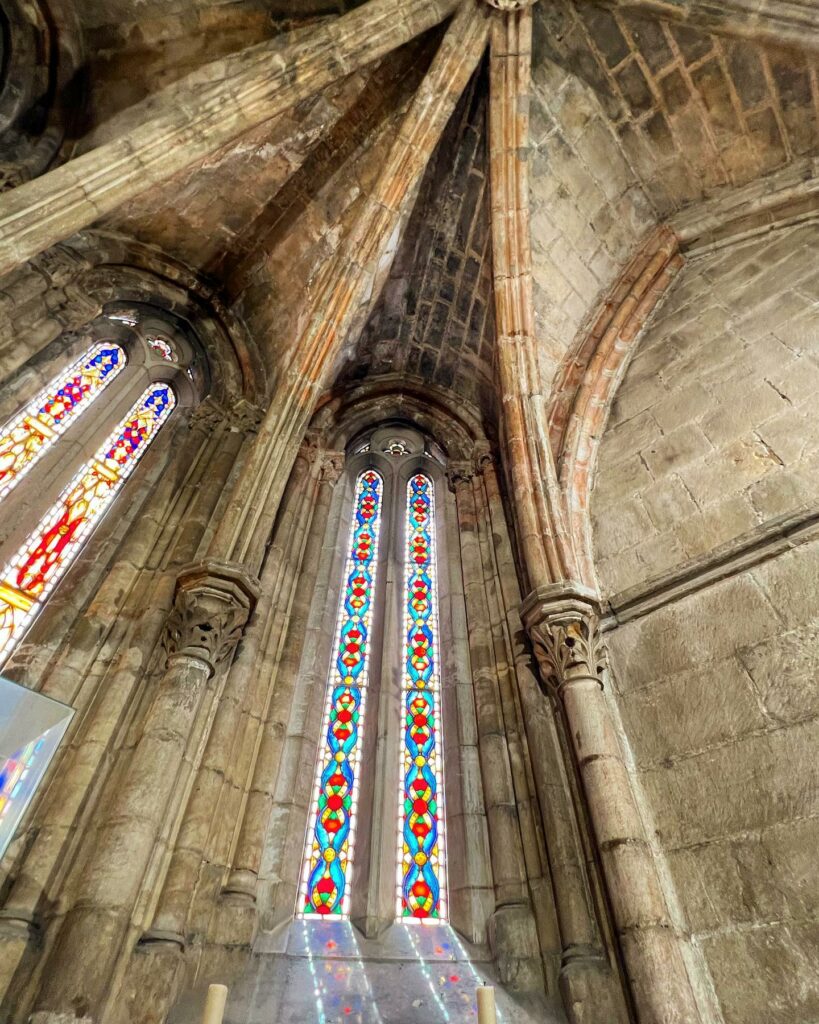
Before you visit the cathedral, check out these helpful tips:
- Plan Your Visit Early: Arrive early in the day to avoid crowds and enjoy a quieter experience.
- Dress Appropriately: As a place of worship, modest attire is recommended. Avoid wearing shorts, sleeveless tops, and hats inside.
- Explore the Treasury: The cathedral’s Treasury houses a collection of religious artifacts and treasures.
- Visit the Cloister: The Gothic cloister is a serene and beautiful part of the cathedral, offering a peaceful retreat from the bustling city.
- Capture Memories Respectfully: Photography is allowed, but respect the sacred environment and avoid using flash.
- Stay Aware of Services: Respect worshippers, be mindful of ongoing religious services, and avoid touring the cathedral during these times.
Wrap-Up: Lisbon Cathedral
Discovering Lisbon Cathedral is more than just visiting a historic site; it’s an immersive journey through the heart of Lisbon’s rich cultural and religious heritage.
As you explore its awe-inspiring Gothic architecture, uncover its hidden treasures, and absorb the serene atmosphere, you’ll gain a deep appreciation for the stories and history that have shaped this iconic landmark.
Its central location makes it an accessible and essential stop on any Lisbon itinerary. Plan your visit, embrace the experience, and let the timeless beauty of Lisbon Cathedral leave a lasting impression on your journey through this vibrant city.
